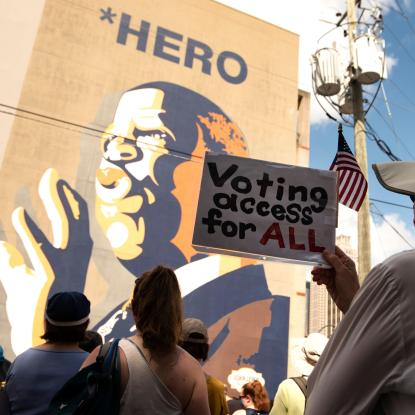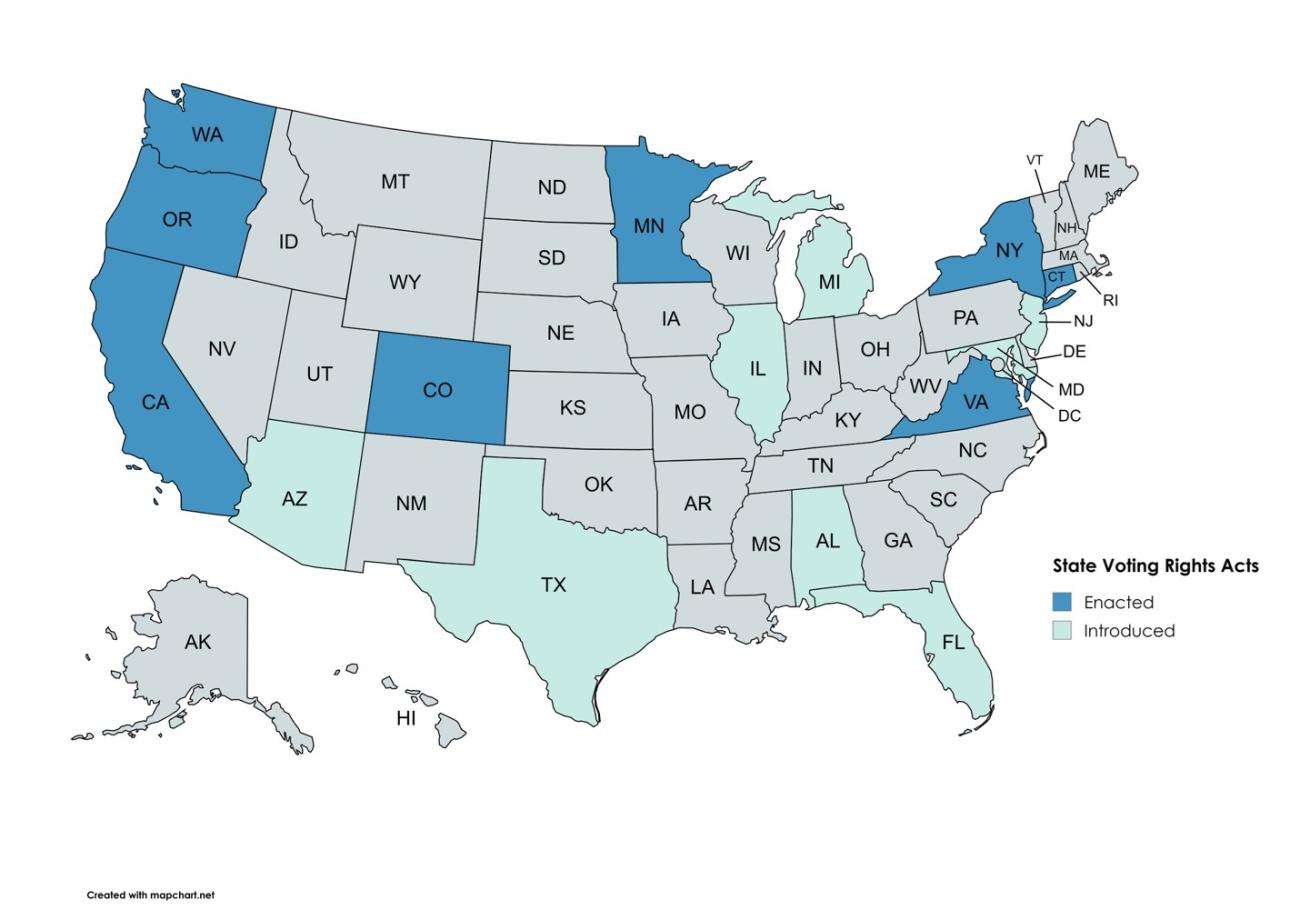If you have questions about this policy proposal, we'd love to hear from you! Just e-mail us.
Written Testimonies by State

A growing number of states have passed state voting rights acts (state VRAs) — powerful tools designed to safeguard voting rights, prevent discrimination in voting and build a more inclusive, transparent democracy. At a time when historically disenfranchised communities still face significant barriers to voting, multiple states have stepped up and protected the freedom to vote through state VRAs.
Why State VRAs are Important
For decades, the federal Voting Rights Act of 1965 (VRA) served as our nation’s most effective shield against racial discrimination in voting. But recent U.S. Supreme Court decisions like Shelby County v. Holder and Brnovich v. DNC have weakened the VRA by undermining its key protections, like the preclearance requirement that once blocked discriminatory voting changes before they could take effect.
While Congress has failed to pass federal reforms, states are taking action. State VRAs help fill the gaps left in federal law and build a democracy that is truly of, by and for the people.
State VRAs are designed to protect the freedom to vote by:
State VRAs are not just temporary fixes — they are long-term, far-reaching solutions that ensure all voters, regardless of race or background, can fully participate in our democracy.
Current Landscape of State VRAs
Eight states have already enacted state VRAs, including California (2002), Washington (2018), Oregon (2019), Virginia (2021), New York (2022), Connecticut (2023), Minnesota (2024), and Colorado (2025). Advocates in other states like Maryland, New Jersey, Florida, Michigan, and Alabama are working to expand that list.

Momentum is growing — and it’s fueled by broad public support. Recent polling shows that 78% of voters nationwide support state VRAs, with strong backing across party lines and racial and ethnic groups.
Real Impact, Real Change
State VRAs are already making a difference:
These victories show how state VRAs are empowering communities and strengthening democracy.
The Path Forward
Passing state VRAs is one of the most powerful steps lawmakers can take to protect voting rights. While the fight for the restoration and strengthening of the federal VRA through measures like the John R. Lewis Voting Rights Advancement Act continues, states must act now to ensure every voter has an equal voice.
State VRAs are not a substitute for federal action, but they are a vital part of a comprehensive strategy to create a fairer, more inclusive democracy.
If you have questions about this policy proposal, we'd love to hear from you! Just e-mail us.
Written Testimonies by State